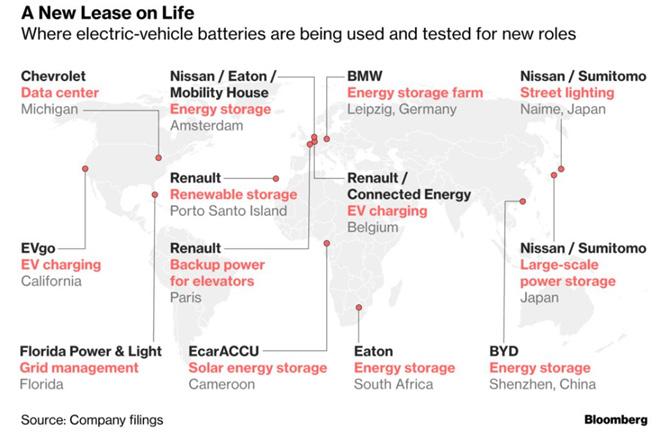
3 minute read
EV BATTERY TRENDS & OPPORTUNITIES
Trends in Batteries
Outside of foreign dependence on manufacturers, one of the main issues with batteries is their eventual disposal. Lithium-ion batteries have harmful chemicals that are hazardous to human health and the environment if left in a landfill. Much of the environmental focus on batteries has been on recycling or re-use of batteries in their second life. EV batteries tend to last about ten years before they need to be replaced. Around that point, they have around 70% of their original power potential, which is not enough to reliably run a vehicle. However, this is still enough power to be used for other energy needs. More than 1 million EVs were sold in 2017. Estimates show that those vehicles alone will result in 250,000 tons of discarded battery packs – most of which are made with lithium-ion.
In the waste management world, reuse is considered superior to recycling. Because there is so much value in a lithium-ion battery, it should be repurposed to optimize material use and lifecycle impacts. Profitable second use applications can provide a revenue stream that can offset the cost for the eventual recycling of the battery.
One of the major trends in reuse is repurposing batteries to provide energy storage and grid services. As solar power becomes more popular, using old EV batteries for battery storage is becoming a more common solution to address energy storage. Lithium-ion car and bus batteries can collect and discharge electricity for another seven to 10 years after being taken out of an EV. Researchers at UC Davis demonstrated this capability by repurposing 15 Nissan Leaf batteries to act as battery storage for a solar array that powers a brewery, winery, and food processing complex. The battery packs collect excess power from the 200 kW solar array and discharge in the evening and at night to offset the facility’s energy use.

Source: Bloomberg
Even after use and reuse of a battery, eventual disposal of a battery is inevitable. Unfortunately, recycling batteries is a costly process. It requires a high temperature melting and extraction process, similar to processes used in mining. Battery recycling typically occurs in large facilities based in Asia. These plants are expensive to build and maintain, and require sophisticated equipment to neutralize the emissions generated by the recycling process. These plants also lack the capability to recover all valuable battery materials.
Recycling does have potential benefits for the battery industry. Materials like cobalt are costly and rare, and recycling processes can extract components from old batteries to be used to make new ones, lowering manufacturing costs. Lithium-ion batteries are compact and complex devices without a uniform size or structure, and are not designed to be disassembled, which makes the recycling process costly and labor intensive.
Policies on Second Life and Recycling
As the first major wave of EV batteries reaches retirement age, countries and industries are grappling with how to handle an influx of batteries entering landfills. Once an EV battery capacity dips below 70-80%, the battery is no longer strong enough to power a vehicle. Instead of disposing of the battery, it can still be used for other power purposes until it is eventually recycled. Despite these options, many EV owners will purchase a new vehicle and dispose of the parts of their old model instead of recycling them. In response, companies and regulators have begun establishing second life of recycling policies to discourage the immediate disposal of EV batteries.
Chinese sales account for over half of the world’s EVs. To address the issue of batteries in landfills, the Chinese government has enacted policies to place the responsibility of EV battery recycling on auto manufacturers. They must set up recycling channels and service outlets where old batteries can be collected, stored, and transferred to specialist recyclers. In reaction to these rules and the expense of recycling, the industry in China is looking for creative ways to reuse battery packs, rather than recycling them immediately after they are removed from a vehicle. China is leading the way in employing EV batteries in second life capacity uses, particularly when it comes to energy storage. Companies like BYD, an electric bus manufacturer, are using EV batteries as backup storage. Nissan is also using second life EV batteries to power the streetlights in their facility. This reuse not only saves money, it also reduces the demand for battery materials.

Source: Bloomberg



